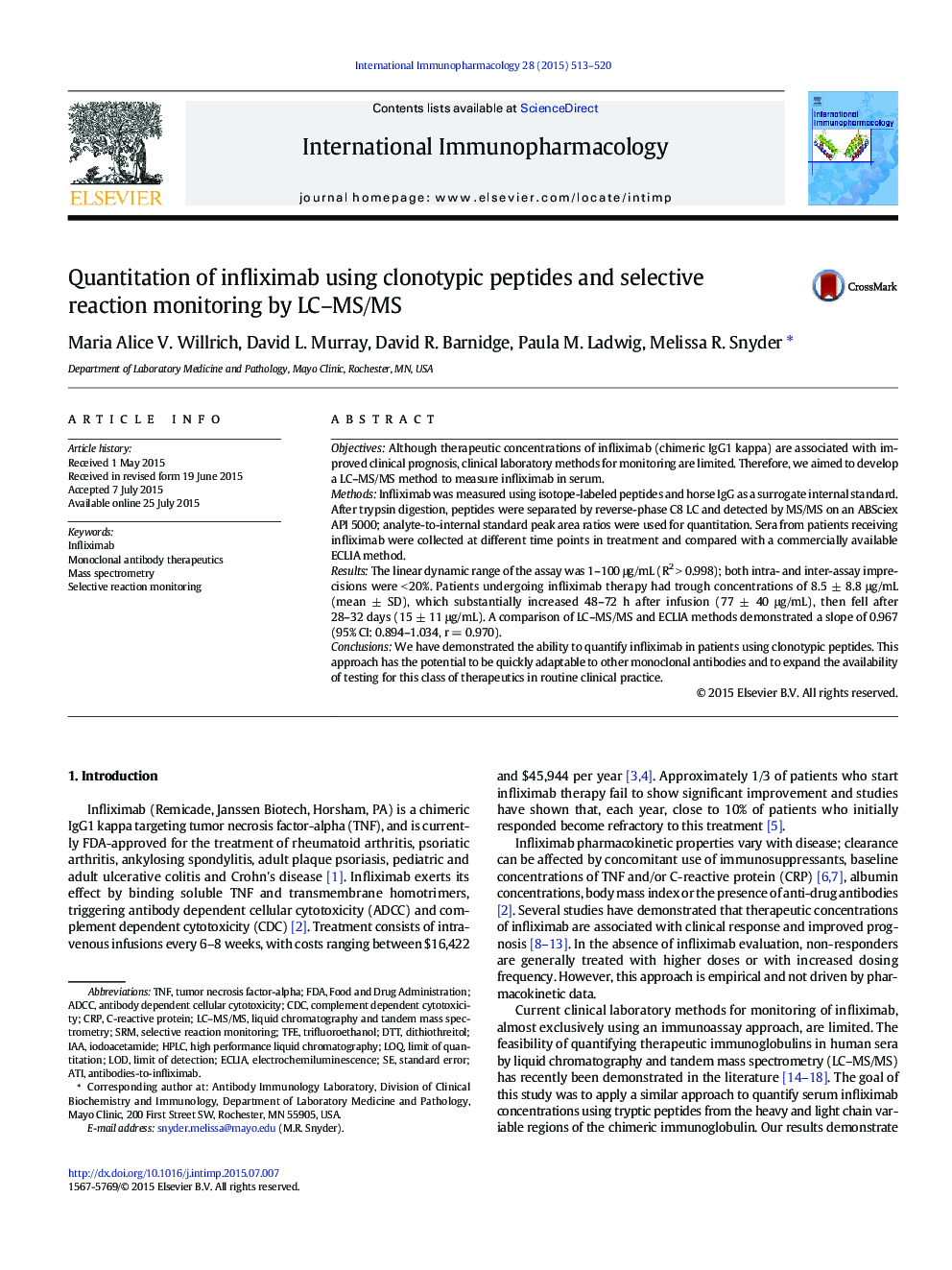| Article ID | Journal | Published Year | Pages | File Type |
|---|---|---|---|---|
| 2540487 | International Immunopharmacology | 2015 | 8 Pages |
•Development of tryptic-peptide SRM LC–MS/MS method for quantitation of infliximab (IFX)•Validation of method for clinical testing through assessment of multiple parameters•Demonstration of correlation between IFX quantitation by LC–MS/MS and immunoassay•Quantitation of IFX in serial samples from patients receiving infusion therapy
ObjectivesAlthough therapeutic concentrations of infliximab (chimeric IgG1 kappa) are associated with improved clinical prognosis, clinical laboratory methods for monitoring are limited. Therefore, we aimed to develop a LC–MS/MS method to measure infliximab in serum.MethodsInfliximab was measured using isotope-labeled peptides and horse IgG as a surrogate internal standard. After trypsin digestion, peptides were separated by reverse-phase C8 LC and detected by MS/MS on an ABSciex API 5000; analyte-to-internal standard peak area ratios were used for quantitation. Sera from patients receiving infliximab were collected at different time points in treatment and compared with a commercially available ECLIA method.ResultsThe linear dynamic range of the assay was 1–100 μg/mL (R2 > 0.998); both intra- and inter-assay imprecisions were < 20%. Patients undergoing infliximab therapy had trough concentrations of 8.5 ± 8.8 μg/mL (mean ± SD), which substantially increased 48–72 h after infusion (77 ± 40 μg/mL), then fell after 28–32 days (15 ± 11 μg/mL). A comparison of LC–MS/MS and ECLIA methods demonstrated a slope of 0.967 (95% CI: 0.894–1.034, r = 0.970).ConclusionsWe have demonstrated the ability to quantify infliximab in patients using clonotypic peptides. This approach has the potential to be quickly adaptable to other monoclonal antibodies and to expand the availability of testing for this class of therapeutics in routine clinical practice.
